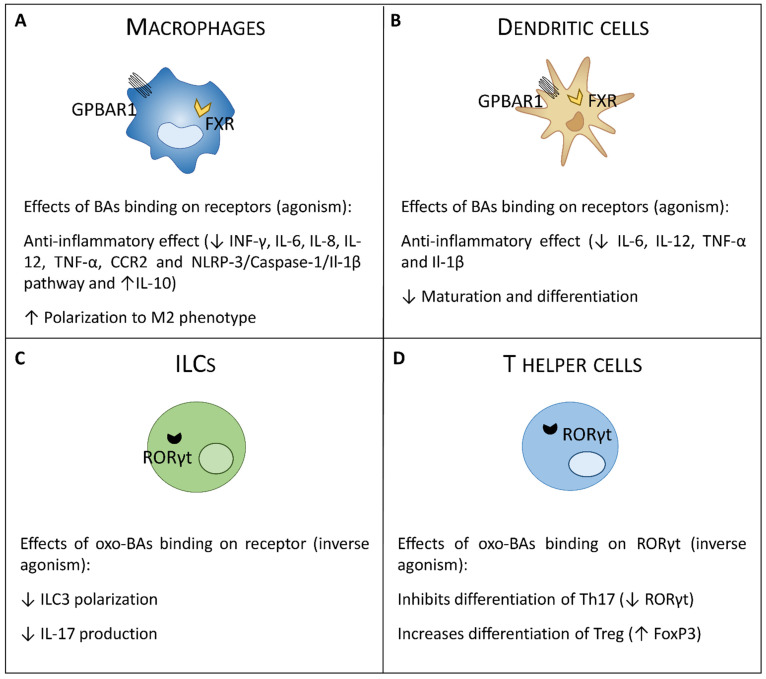Figure 2.
Expression and functional role of G-protein bile acid receptor 1 (GPBAR1), Farnesoid-X-receptor (FXR) and RORγt in cells of immunity. Macrophages and dendritic cells (DCs) express GPBAR1 and FXR. T helper cells and ILCs express RORγt. (A) In macrophages, activation of these receptors by bile acids induces a polarization toward the anti-inflammatory M2 phenotype with an upregulation of IL-10 and a downregulation of the pro-inflammatory cytokines. (B) Bile acids, on the other hand, act on the DCs, down-regulating the production of TNF-α and IL-12 and their maturation and differentiation. (C,D) Recently, it was shown that oxo-bile acid derivatives, specifically the 3-oxo-LCA, can bind RORγt by acting as an inverse agonist, decreasing the production of IL-17 in T helper cells and ILCs by reducing the polarization towards the Th17 and ILC3 subtypes.

